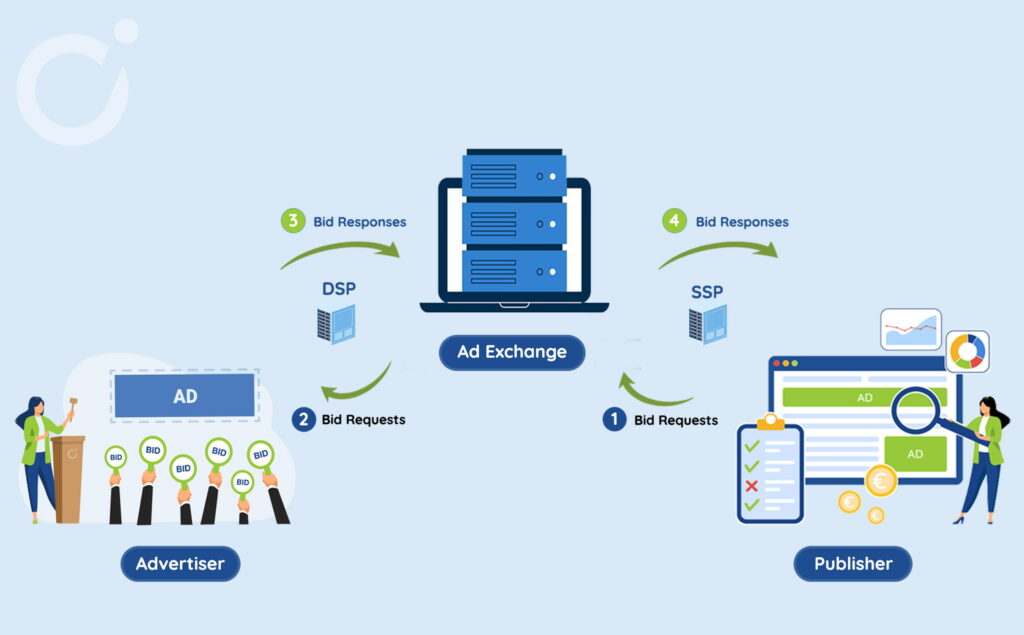Understanding the complex mechanisms behind programmatic advertising auctions is not an easy task. With the introduction of mechanisms for selling ad inventory, such as header bidding and real-time bidding, it becomes important for publishers to understand how to get the most out of their ad inventory. And this is where the bid request and bid response process comes in. This article will attempt to analyze that mechanism, showing its components and our place in the advertising ecosystem.
What is a Bid Request?
In essence, a bid request is a signal, in code form, that prospective advertisers receive from a publisher’s ad server encouraging them to place a bid for an ad space on a webpage. It’s comparable to receiving an invitation to a high-stakes auction online, where the top bidder wins the desired position on the user’s screen.
Anatomy of a Bid Request
A bid request includes crucial information that empowers advertisers to make informed bidding decisions, including details such as:
– Data Impression: Informs about ad placement such as ad size, ad format, and contextual information.
– User Data: Contains demographic data, browsing history (cookies), or device information. This data helps advertisers better understand the target audience.
– IP address
– Ad Inventory Attributes: Provide insights into the available ad inventory, including factors like placement viewability, ad position, and potential viewability.
– Targeting Criteria: May specify targeting criteria set by the publisher (called first-party data), such as audience segments, contextual IAB category or geographic location, ensuring that the ads delivered align with the publisher’s goals.
The Auction Dynamics
Once advertisers receive a bid request, they evaluate the provided information and submit a bid response. The bid response contains details about the ad creative, bidder, advertising campaign and other parameters relevant to the auction. They leverage sophisticated algorithms and real-time data analysis to determine the optimal one, aiming to maximize their chances of winning the impression.
After receiving multiple bid responses, the publisher’s ad server conducts an auction to determine the winning bid. The highest bidder secures the opportunity to display their ad, and their bid price is deducted from their account when the ad is served. This auction process happens in milliseconds, ensuring seamless ad delivery to users.
Sustainable and Efficient Bidding with Opti Digital
The openRTB protocol regulates the auctions and has normalized the bidding process. Bid requests may be enriched with valuable information. For example, the Opti Digital bid adapter consumes all the information contained in the bid requests, one of them is essential: user IDs. If the publisher includes User IDs into their Prebid wrapper, in the publisher ad server, this enables Opti Engage to bid strongly in any environment, even the cookieless browsers such as Safari, Edge and Firefox.
Opti Engage also uses the bid request mechanism to bring more demand to the publisher: It sends server-to-server bid requests to native demand providers, performs the rendering of the native demand and transforms it into display bid responses. This feature positively impacts Opti Engage auction participation rates and CPMs.
Opti Digital’s bidder Opti Engage also employs traffic shaping algorithms. This sustainable technology reduces bid request waste and optimizes latency.
Both enrichment and Supply-Path Optimization (SPO) are part of our most recent Opti Engage product, with a focus on environmental impact, which contributes to an innovative advertising ad format, increasing RPM and ranking among the top bidders via Prebid.
If you want to learn more about all the potential and features of our technology, check our article on sustainable advertising or contact our expert team to develop a tailor-made monetization strategy.
Conclusion
Understanding the intricacies of bid requests empowers media publishers and advertisers to optimize their strategies, reach their target audiences effectively and drive successful advertising campaigns and optimize their ad revenue.Although bid requests are essential, they can be the cause of serious advertising fraud developing to the detriment of industry players. For this reason, it is important to adopt practices aimed at avoiding these unfortunate inconveniences, such as the introduction of the ads.txt files. Want to learn more? Read our article here.




